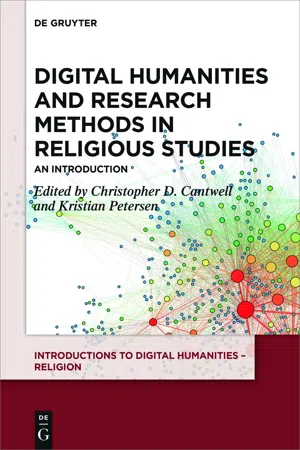Through the centuries Buddhists have managed their shifting corpora via the changing media of oral, handwritten, printed, and now digital text. Part of the conceptual apparatus for these endeavors is the notion of canonicity, a central and early concern for Buddhists.2 Although there is no single, stable Buddhist canon that is used in all traditions, the concept of canonicity, both fluid and robust, has played an important role in shaping how Buddhists perceive of their textual heritage. It is thus not surprising that first digitization efforts were aimed at producing digital editions of the “canon.” Most of the digital canonical editions were created independently from each other, and as a result we have several overlapping versions of the Pāli, Chinese, and Tibetan canon. These are often modeled on twentieth century print editions.
Pāli
The Pāli Canon exists in three major independent digital versions, most of which were created in the late 1980s and 1990s. These have been copied across the net, often with minor changes along the way.3 As a result, digital Pāli texts are easy to find online, but their provenance and editorial standards are often undefined. This makes them difficult to cite and to rely on for philological research.
Perhaps the most influential digital edition of Pāli Buddhist texts is the final CD version (Ver. 3) of the Chaṭṭha Saṅgāyana Edition that was published by the Vipassana Research Institute (VRI) in late 1999.4 As the name Chaṭṭha Saṅgāyana implies, the VRI corpus is a digitization of the printed canon as redacted by the sixth council that was held in Yangon from 1954 to 1956. The strengths of the VRI corpus are that the texts have been proofread, and that it alone among digital editions of the Pāli canon includes the commentaries (aṭṭhakathā) and sub-commentaries (ṭika). Markup links connect the commentaries to the mula text, making it possible to build interfaces that present the mula together with two layers of commentaries.
It is unclear whether or in how far the online texts currently available on the VRI website, called Chaṭṭha Saṅgāyana Tripitaka Ver. 4.0, were edited beyond the last Chaṭṭha Saṅgāyana CD (Ver. 3) version. As with all digital editions of the Pāli canon there is lack of technical documentation, or indeed any documentation or meaningful metadata. Digital editions need, like their print counterparts, information as to who created the resource, when and where, and what editorial decisions were made (and why) in converting the printed into a digital text. Development on the VRI corpus seems to have stopped some years ago, though a search engine for the corpus (Windows only) and an iPhone app has been made available. These days the best way to use the VRI corpus is via the Digital Pāli Reader that is developed and maintained by Yuttadhammo Bhikkhu.5
A second digital edition of the Pāli canon is the Sri Lankan Buddha Jayanti Tripitaka Project, which has digitized the Pāli Canon from the government sponsored Sinhalese Buddha Jayanti edition (1956–1990), an edition that was created partly in response to the Burmese Chaṭṭha Saṅgāyana. The digital version of the Buddha Jayanti corpus, seems less well proofread than the VRI corpus, but it too has been available since the 1990s, and can be found on various websites. Next to the core texts of the Pāli Tripiṭaka, the Buddha Jayanti corpus comprises a small number of paracanonical and commentarial works, as well as texts on history, grammar and rhetoric. One stable way of accessing the Buddha Jayanti corpus is via the Göttingen Register of Electronic Texts in Indian Languages (GRETIL) (see below).
The third digital Pāli corpus, still hardly noticed by the scholarly community, is the release of the Pāli Text Society edition online under a CC License via GRETIL. The digitization is the result of a collaboration between the PTS and the Dhammakaya Foundation in Thailand between 1989 and 1996. The original aim was, as so often in the 1990s, to produce a CD. After two CD versions, this line of distribution was discontinued, and in 2014 the texts were released on GRETIL. The digital PTS corpus so far consists only of the Pāli Vinaya, Sutta and Abhidharma, none of the commentarial and paracanonical works from the PTS print series seem currently available digitally.
To date (June 2019), the files on GRETIL contain the copyright notice: “This file is (C) Copyright the Pali Text Society and the Dhammakaya Foundation, 2015. This work is licensed under a Creative Commons Attribution-ShareAlike 4.0 International License.”6 Moreover, the PTS files in GRETIL contain the following disclaimer: “These files are provided by courtesy of the Pali Text Society for scholarly purposes only. In principle they represent a digital edition (without revision or correction) of the printed editions of the complete set of Pali canonical texts published by the PTS. While they have been subject to a process of checking, it should not be assumed that there is no divergence from the printed editions and it is strongly recommended that they are checked against the printed editions before quoting.”
Working with digital Pāli text, at this stage the recommendation is to search the VRI Pāli canon via Yuttodhamma’s reader in order to have full access to the commentarial strata, then use the PTS editions in print or pdf to corroborate difficult or doubtful passages.
For simple searches with convenient access to translations and parallels it is best to use the SuttaCentral website (see Sec. 2.2), which hosts emended versions of the VRI corpus, and might at one point add commentarial literature.
